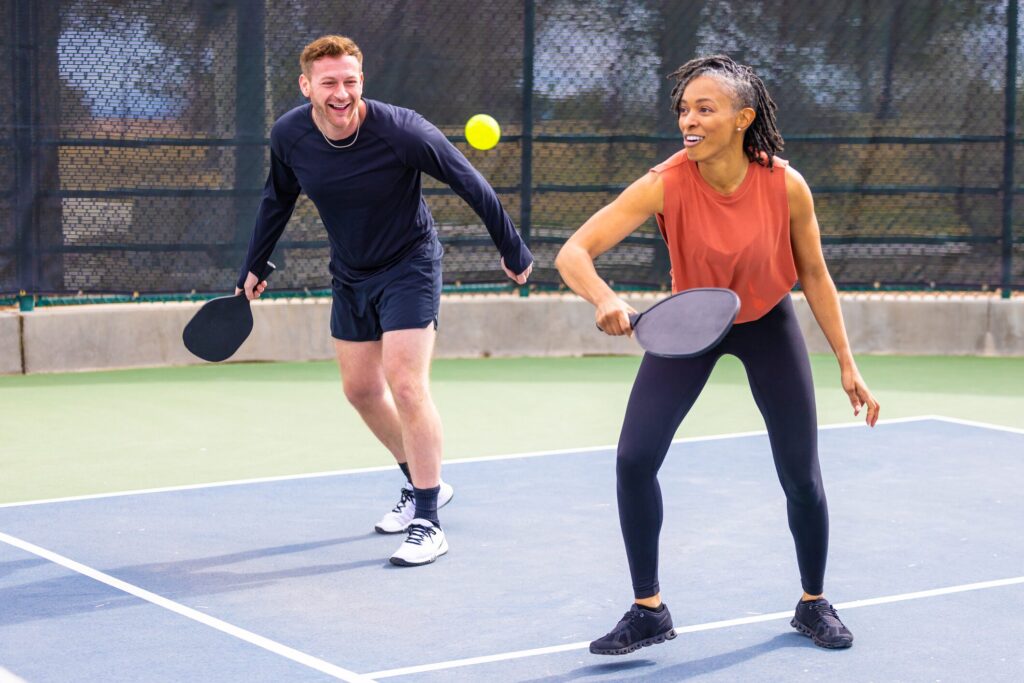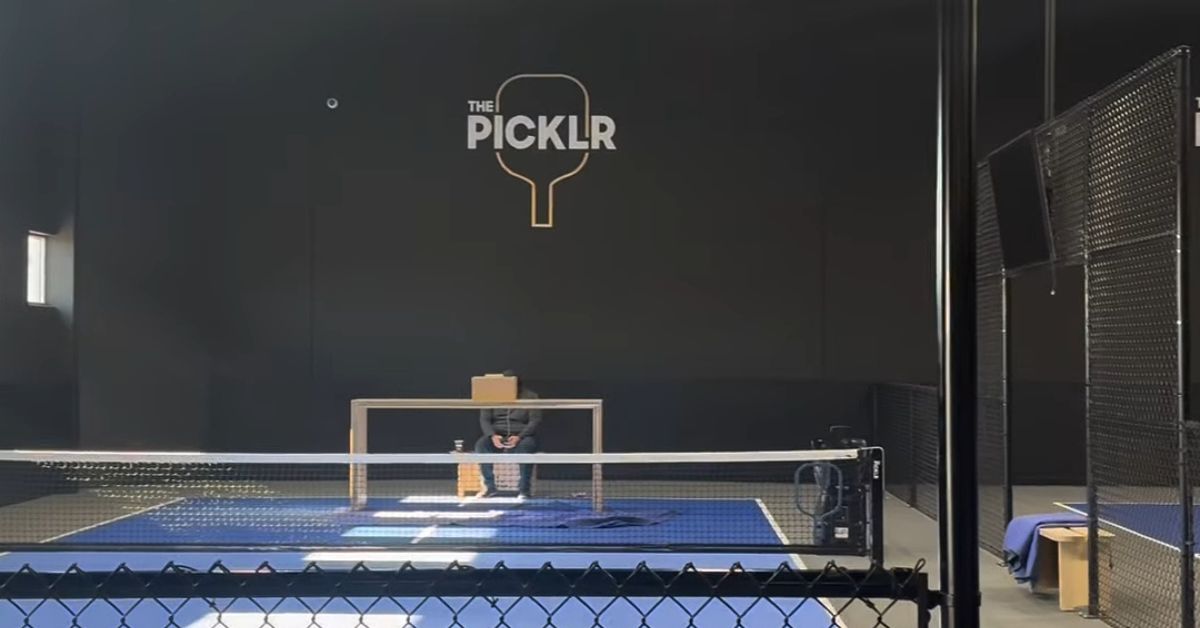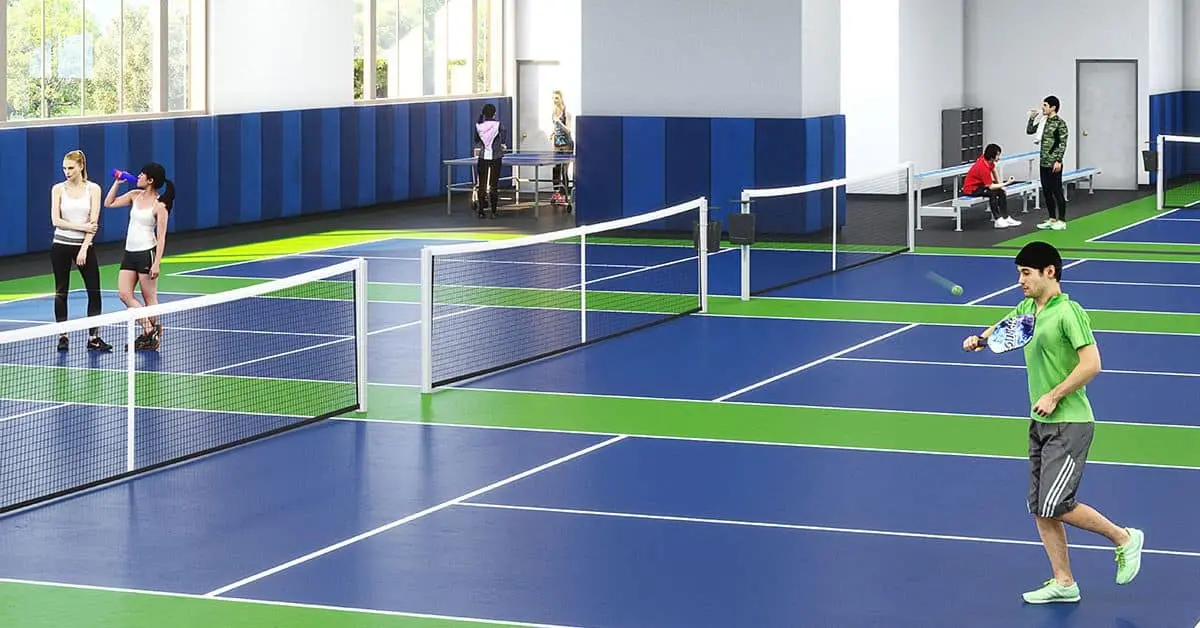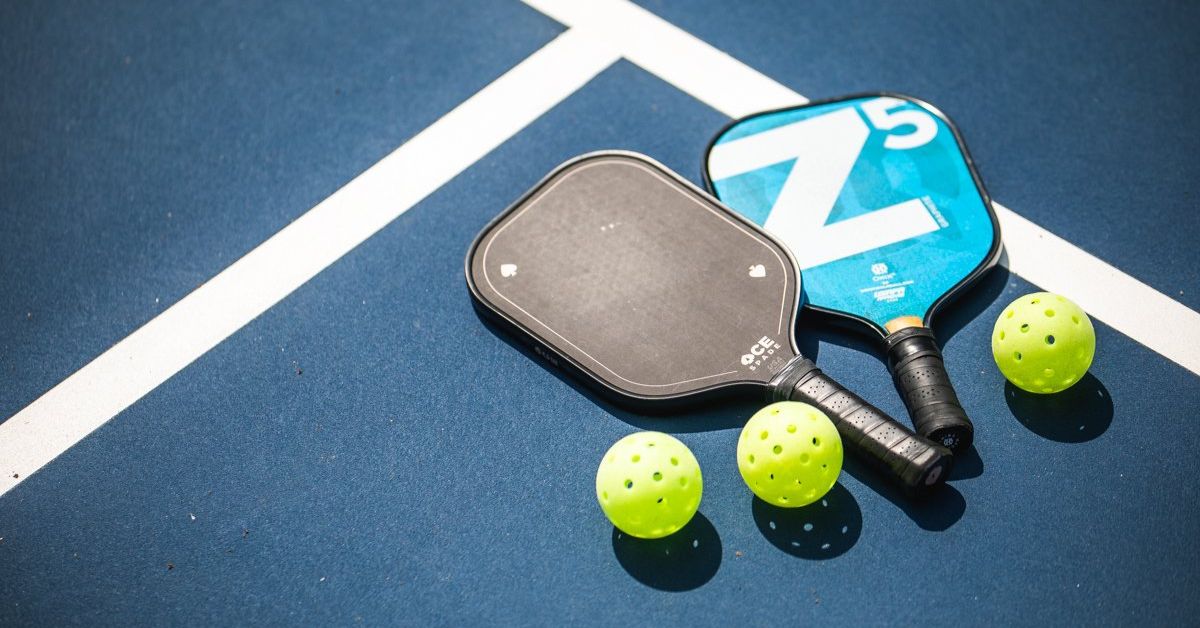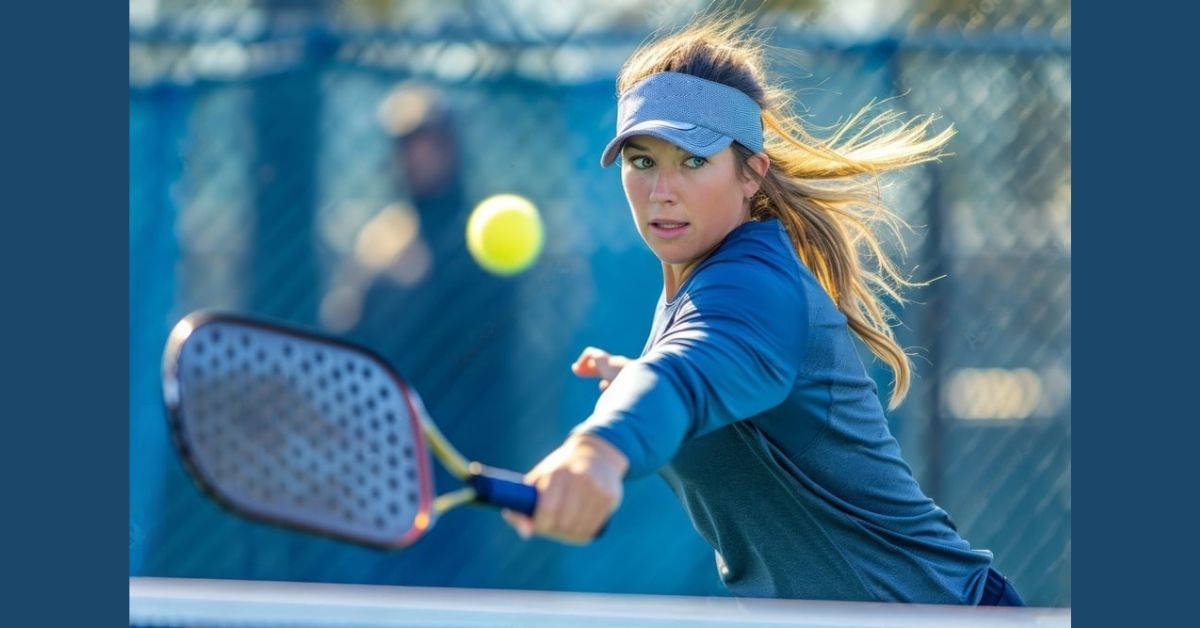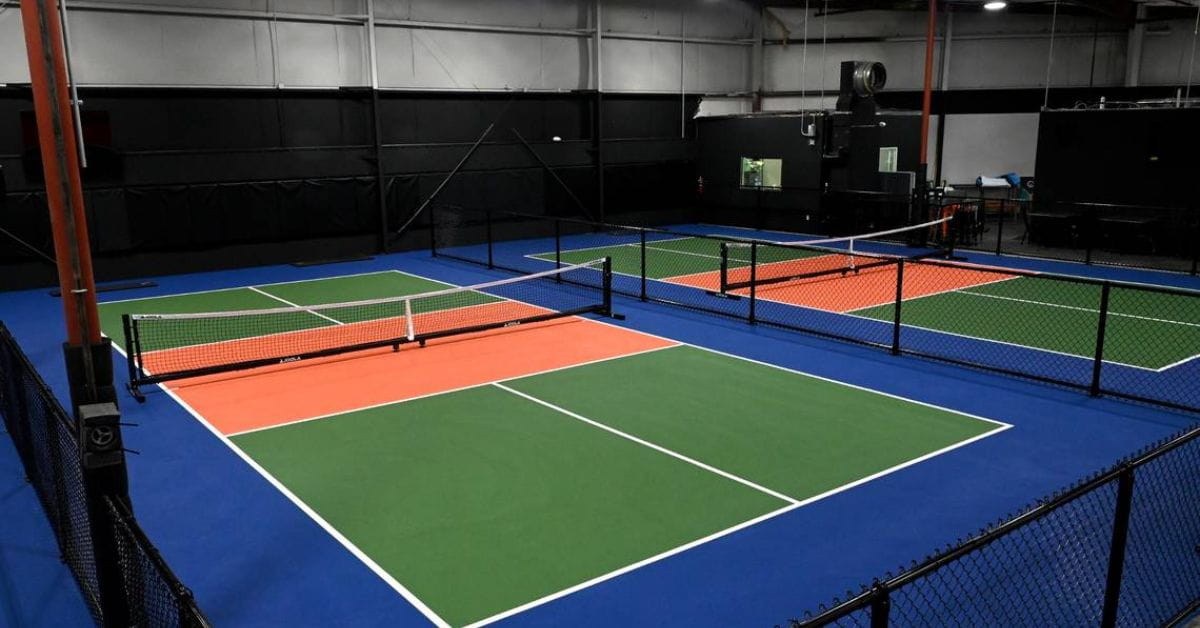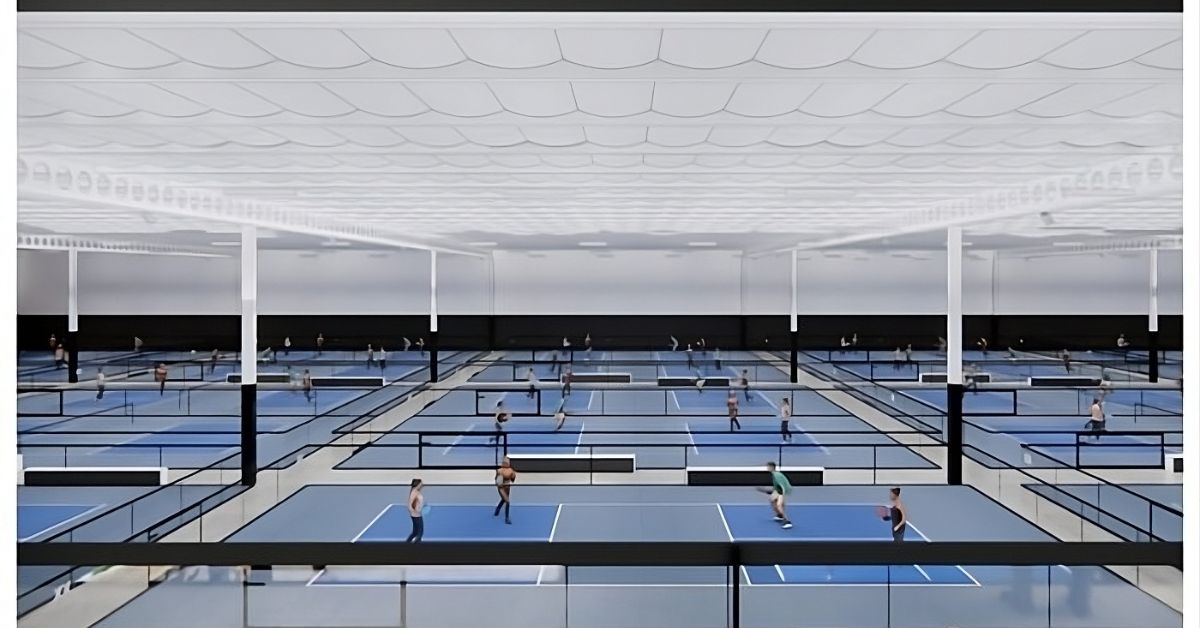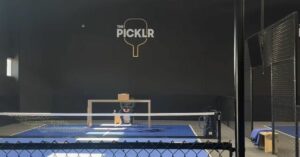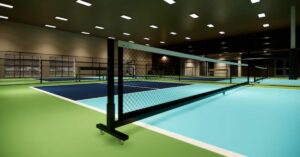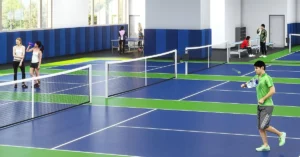One of the most challenging aspects of watching professional pickleball for me was catching up to switching sides. They seemed to have different rules from match to match, and everyone seemed to go with it, which made me realize I was missing something.
So, I asked my doubles partner’s husband, who had been playing the sport long before either of us. His answer was lengthy, went down some distracting paths, but tied up all loose ends in my head. In short, the timing of pickleball’s switching sides isn’t universal.

It changes between recreational play and pro matches, the number of games played in one match, the score differences in each match, etc.
Pickleball isn’t the first racket/paddle game that makes players switch sides. Tennis, badminton, and ping pong have rules that make teams switch sides. Since these sports inspire pickleball, switching sides rules are similar.
In this blog, we’ll discuss the rules of switching sides in pickleball, the factors they are based on, and the different scenarios they manifest on the court.
How Do You Switch Sides in Pickleball
It’s pretty simple once you decide if it’s recreational play or a competitive match. Usually, competitions have the best 2 out of 3 games to determine the winner. The teams switch sides after every match. If the game extends to a third round, players switch sides after one team scores at least 6 points.
This is a simplified version. Much more goes on in the real-time play, so we will discuss some necessary pickleball rules about scoring to understand when teams switch sides in recreational and competitive games.
Rules for Pickleball Scoring
How pickleball is played in singles and doubles varies significantly, especially in serving, determining how the players will switch sides.
Each team has a single player on either side of the net for singles. According to pickleball singles rules, the server starts serving from the right serving court of their side and then alternates between left and right.
The opponent has to adjust themselves to the diagonally opposite court of the serve. The player keeps serving until they commit a fault, after which the opposing team serves until they commit a fault.
In singles, it is best through court switches. The server starts from the right; every time the score is even (0, 2, 4, 6), they serve from the right. They serve from the left whenever the score is odd (1, 3, 5, 7).
Pickleball rules in doubles are different about serving. A doubles game has two players on each team on each side of the net. The serving team’s player starts serving from the right side of the court and keeps switching between the left and right courts in subsequent serves.
A fault will pass the serving turn to their partner, who will start from the right serving court. Once both team members have committed a fault, the opponents get to serve. A similar switching of sides ensues.
This is just switching sides between single or team players across the centerline. Switching sides in pickleball also occurs across the net, especially in professional matches where the best of three games are selected to decide the winner.
Understanding the rules and scoring system of pickleball is important, especially if players want to compete professionally. Following these guidelines, players can ensure fair play and maximize their game enjoyment.
When To Switch Sides in Pickleball
For most tournaments, the only switching over across the net happens after a game. Only a third game of a match may have a court switch across the net mid-game at 6 points.
Pickleball typically employs rally scoring, where only the serving team can score points. The serving team must score points to win the serve. If the serving team doesn’t score a point, the serve passes to the opposing team, who can then score points.
Switching Sides After Games
In competitions, players switch sides after each game. A game is typically played to 11 points, and the winning team must win with a two-point margin. After a match, players switch sides, i.e., replace each other across the net. This ensures that no team has a consistent advantage due to court conditions or lighting.
In tournaments, a match usually consists of the best of three games, with players switching sides after each. If the match continues to a third game, the players switch sides after one of the teams scores 6 points. This rotation helps maintain fairness and equalizes any environmental factors affecting gameplay.
This is true for most tournaments. However, as all players agree, some tournaments allow other scoring and switching methods. It’s good to read championship rules around scoring before you sign up to participate. It helps you practice under those rules before you are on the actual court.
When Do You Switch Servers in Pickleball
To summarize what we’ve learned above, switching sides in pickleball occurs two ways: across the centerline in singles play or doubles teammates and across the net between opponents after a game.
In pickleball, the rotation of servers follows a specific pattern designed to maintain fairness and balance throughout the game. Let’s explore the timing and circumstances under which servers switch in pickleball:
The first serving team is decided with a coin toss. In singles, the lone team member serves from the right service court on their side of the net.
After the first serve, they switch to the left and keep alternating until they make a fault. The opponent is expected to receive their serve at the diagonally opposite serving court.
The first team member starts from the right in doubles and switches like in singles. After committing a fault, however, the service turn passes to their team member who also makes the first serve from the right serving court. Failure to switch court positions during serves and serving from the wrong serving court is also considered a fault in pickleball.
The switching of a serving turn is called a side-out. A side-out occurs when the serving turn switches from one team to another. In singles, this happens after the lone team member commits a fault. In doubles, the side-out happens after both team players commit a fault and give up their serving turn.
A fault could be anything from hitting the ball out of bounds and failing to clear the net on a serve to committing a fault during play, including even being on the wrong serving court.
Switching Sides in Professional Pickleball
In professional pickleball tournaments, the protocol for switching sides is governed by specific rules and regulations to ensure fairness and equal opportunities for all players.
Unlike casual play, where rules for switching sides may be random (for example, all players serve from the same court on a windy day), professional tournaments implement structured rotations to maintain consistency and competitive integrity throughout the matches.
Let’s see common ways in which players switch sides in professional pickleball, including the best-of-three match format and alternative rotation methods like stacking and 2-2-2:
Professional Pickleball
Pickleball’s switching sides while playing professional tournaments typically employ a best-of-three match format to determine the winner of a game. In best-of-three matches, two teams play at least two games against each other.
The overall winner is any team that wins two games first. Each game is usually played until a team scores 11 points with a two-point advantage. A third game is only played if both teams have won one match each.
Players switch sides of the court after each match within the best-of-three series. This rotation ensures that environmental factors such as wind, sun position, and court conditions do not favor one team. By alternating sides between matches, players have an equal opportunity to adapt to different playing conditions and maintain fairness throughout the tournament.
Alternative Options
In professional pickleball, stacking is a strategic rotation method used by doubles teams to maximize their strengths and exploit their opponent’s weaknesses. In stacking, a primary server can serve from the same serving court regardless of the team’s points as long as all players agree on the rules. Often, left-handed players opt for stacking to keep a stronghold of their team’s forehand in the center.
Some competitions also allow stacking as long as the other rules of serving are followed, i.e., underhand shot with both feet planted behind the baseline. Stacking allows the team to capitalize on the primary server’s strengths while maintaining balance and flexibility on the court.
2-2-2 Rotation
The 2-2-2 rotation method is another alternative for professional pickleball, particularly in mixed doubles matches. In this rotation, each player serves two consecutive points before rotating out.
For example, move from the net to the baseline after your partner’s serve gets you two points.
For example, Player A serves the first two points, followed by Player B serving the next two serves. After the initial rotation, players switch sides, and the sequence repeats until the end of the match.
In 2-2-2 rotation, the pickleball switching sides strategy allows teams to leverage the strengths of both players while maintaining a consistent rhythm and tempo throughout the game.
In professional pickleball, switching sides is governed by structured rules and rotation methods designed to uphold fairness, competitiveness, and strategic gameplay. Tournaments typically utilize a best-of-three match format, where players switch sides after each match within the series.
Switching Sides in Recreational Games
In recreational pickleball play, the rules for switching sides can vary based on game format, player agreement, and individual preferences.
In doubles matches, players may switch sides after each point, each game, or at other intervals determined before the match begins.
Let’s explore how the rules for switching sides may change in recreational play, particularly in singles and doubles matches:
Doubles Play
Players on the same team switch serving courts after scoring each point in many recreational pickleball doubles rules. This practice ensures that all players have an equal opportunity to adapt to varying court conditions, such as wind or sun exposure. Additionally, frequent side changes can contribute to a more balanced and enjoyable playing experience for all participants.
Some recreational doubles games may switch sides after each game rather than after each point. This approach maintains consistency with the format used in professional tournaments, allowing players to adjust to new court positions and environments regularly.
In recreational doubles play, the rules for switching sides are often flexible and subject to agreement among the players.
Before starting a match, participants may discuss and decide on the preferred frequency of side changes based on factors such as skill level, playing style, and personal preferences. This collaborative approach fosters a relaxed and inclusive atmosphere conducive to enjoyable gameplay.
Singles Play
Singles play requires individuals to cover the entire court independently. As a result, there are virtually no restrictions for the singles player on movement except while serving.
In singles matches, players typically follow the same switching rules as the doubles, with the only difference being where players rotate positions and share responsibilities.
In recreational pickleball singles, the rules for switching sides are often adaptable to the specific circumstances of the game.
For example, if players encounter uneven court conditions or environmental factors significantly impacting gameplay, they may agree to switch sides mid-match to ensure fairness and balance.
In singles play, continuous play on one side of the court is typical, although players may still take breaks or adapt to changing conditions as needed.
Ultimately, switching sides in recreational play aims to enhance enjoyment and camaraderie among participants, fostering a positive playing experience for all involved.
Switching Sides in Pickleball
Understanding why players switch sides in pickleball can help you navigate the rules of the game effectively. Making sense of the motion is the first step to finding a strategy. Whether in recreational or professional tournaments, the rules for switching sides contribute to fair play, entertainment, and socializing.
From the structured rotations of professional matches to the flexibility and adaptability of recreational play, switching sides mitigates environmental factors, promotes strategic gameplay, and ensures equal opportunities for all participants.
Whether you’re lying singles or doubles, you utilize the position change to your advantage and adjust to varying court conditions to optimize your performance.
The fast-paced court switches also indicate the spirit of sportsmanship in games like tennis and baseball. Court switches keep you on your toes, constantly calibrating your position relative to your partner, the opponents, and the ball. Getting used to switching sides in pickleball can help casual players and seasoned competitors develop effective strategies.


